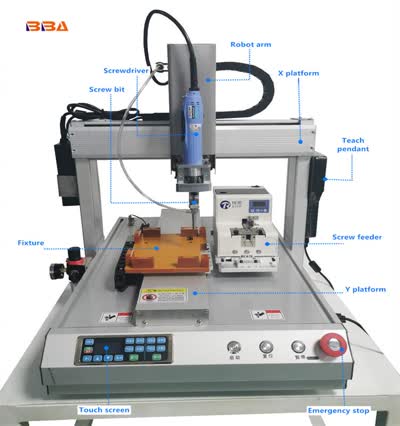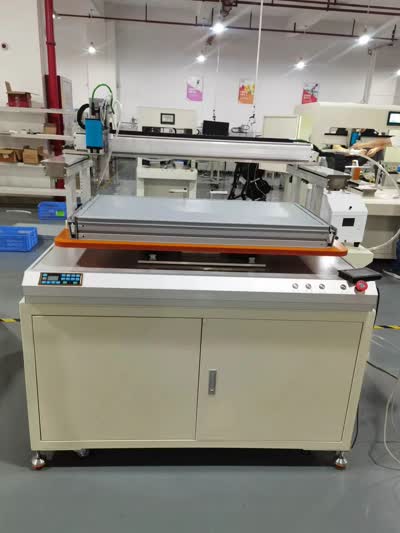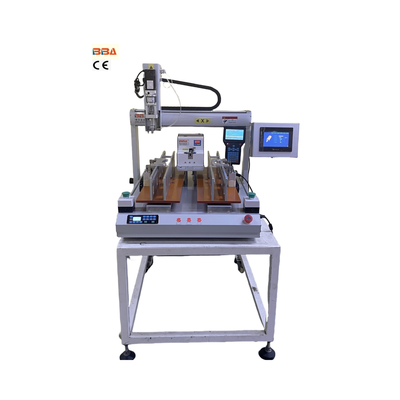Screw Feeder Price Comparison: Budget vs Premium Automated Screwdrivers
| Product Name | Applicable industries |
| Dual Head Screwdriver | Power Tool Assembly Lines |
Comparing Screw Feeder Prices: Budget vs. Premium
Selecting the right screw feeding automation for your assembly line is a critical decision that impacts productivity, product quality, and your bottom line. A central part of this decision often comes down to a fundamental choice: should you invest in a budget-friendly model or a premium system? The answer is rarely straightforward, as the true cost of ownership extends far beyond the initial purchase price. This article delves into the key differences between budget and premium screw feeders, helping you make an informed choice that aligns with your operational needs and financial strategy.
Initial Purchase Price: The Obvious Difference
The most immediate and apparent distinction lies in the initial capital outlay. Budget screw feeders are designed to be cost-effective, offering a basic, no-frills solution for simple applications. They are an attractive option for small workshops, startups, or companies with very low-volume and non-critical fastening tasks. The lower price point makes automation accessible without a significant financial commitment.
In contrast, premium screw feeders command a higher initial investment. This cost reflects advanced engineering, superior materials, and sophisticated technology. You are paying for enhanced performance, exceptional reliability, and a suite of features designed to maximize efficiency and minimize downtime.
Performance and Reliability: The Hidden Cost of Downtime
Where budget models often reveal their limitations is in consistent performance and long-term reliability. They may be more susceptible to jams, misfeeds, or handling issues with non-standard or slightly damaged screws. Every minute spent clearing a jam or manually feeding screws is a minute of lost production, translating directly into lost revenue and increased labor costs.
Premium systems are built for uninterrupted operation. They incorporate innovative anti-jam mechanisms, precise vibration control, and intelligent sensing technology that can detect and correct feeding issues before they cause a stoppage. This robust reliability is essential for high-volume production lines where downtime is prohibitively expensive. The investment in a premium feeder is, in essence, an investment in production continuity and predictable output.
Features and Technology: Automation Intelligence
The technological gap between budget and premium tiers is significant. Budget feeders typically provide basic functionality: storing screws and presenting them to a pickup point. Operator intervention is often required to manage variations.
Premium feeders elevate automation to a new level. They feature programmable controls, allowing operators to store recipes for different screw types and quickly changeover between jobs. Integrated vision systems or smart sensors can verify screw presence and orientation, ensuring only correctly presented fasteners are picked. This level of intelligence reduces error rates, improves first-pass yield, and provides valuable data for process monitoring and traceability.
Durability and Total Cost of Ownership (TCO)
Construction quality is a major differentiator. Budget models may use more standard-grade components and lighter-duty materials to achieve their low cost. Over time, especially in demanding 24/7 environments, this can lead to higher wear and more frequent part replacements.
Premium feeders are constructed with industrial-grade components—hardened tracks, powerful and efficient drives, and heavy-duty bowls. This rugged build quality ensures a longer operational lifespan and greater resistance to the rigors of a factory floor. When evaluating price, it is crucial to consider the Total Cost of Ownership, which includes maintenance, spare parts, energy consumption, and the feeder's productive lifespan. A higher initial price can often result in a lower TCO over five or ten years.
Making the Right Choice for Your Operation
The decision between a budget and a premium screw feeder is not about which is objectively better, but which is better for your specific application. Ask these key questions: What is your production volume? How critical is uptime? What types of screws do you use? What is your technical operators' skill level?
For low-volume, non-critical applications where initial cost is the primary driver, a budget feeder can be a sensible choice. However, for medium to high-volume production, complex fastening processes, or environments where reliability is paramount, the superior performance, advanced features, and lower lifetime cost of a premium screw feeder make it the clear and justified investment. Carefully weighing these factors will guide you to the most economical and efficient solution for your automation needs.



